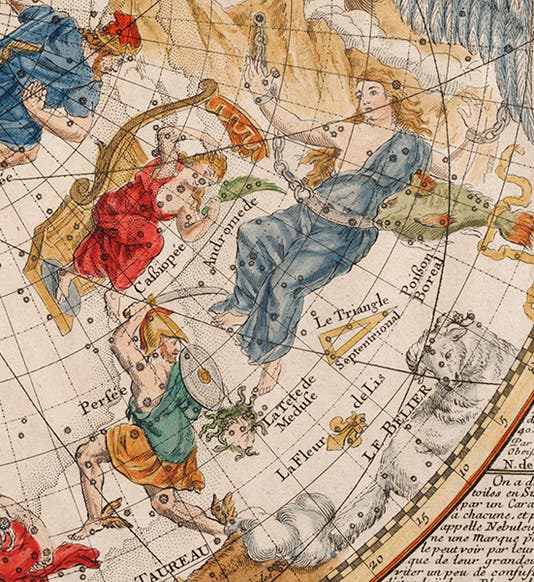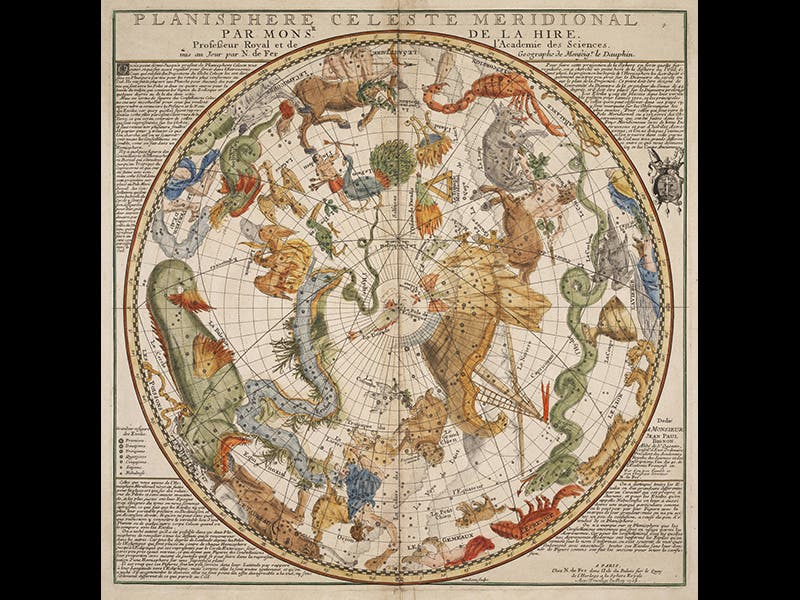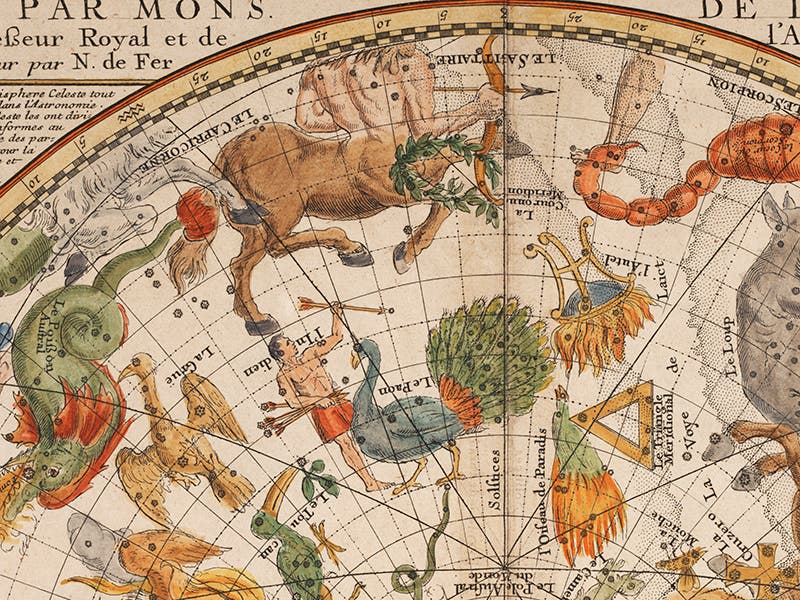Scientist of the Day - Philippe La Hire
Philippe La Hire, a French astronomer and mathematician, died Apr. 21, 1718, at the age of 78. In 1705, La Hire published two large celestial planispheres, or circular maps of the stars and constellations. The circumstances behind these maps are quite obscure. We don't know how La Hire compiled the data for the charts, and whether he had a role in designing the constellation figures. He well could have drawn them himself, since he was the son of a prominent artist, and trained as an artist as a young man. But the legend on the charts says they were "mis au jour," or "brought into the light," by Nicolas de Fer, as if they had been lying in some dark cupboard awaiting discovery. De Fer was a prominent engraver and cartographer, so he may have had a role he had in designing the charts; we just don’t know. But whatever their origin, they are gorgeous. The complete charts are both shown above (the second image shows the northern planisphere, and the fourth image the southern one), as well as two details of the northern hemisphere (first and third images), and a detail of the southern map (fifth image).
You may see both planispheres in our History of Science Collection, but you will get a much better view of the southern map when you walk through the breezeway between the Library exhibition halls and the History of Science Center, where a floor-to-ceiling reproduction is beautifully situated on the curved wall by the cosmology theater.
Dr. William B. Ashworth, Jr., Consultant for the History of Science, Linda Hall Library and Associate Professor, Department of History, University of Missouri-Kansas City











